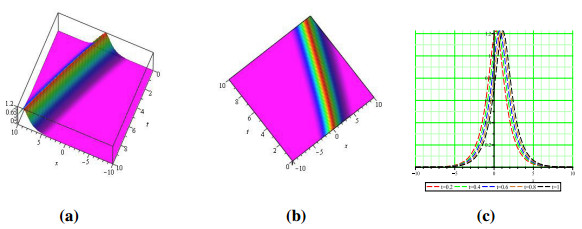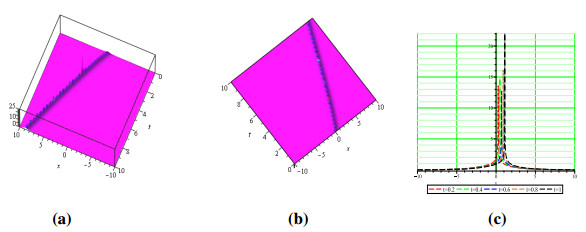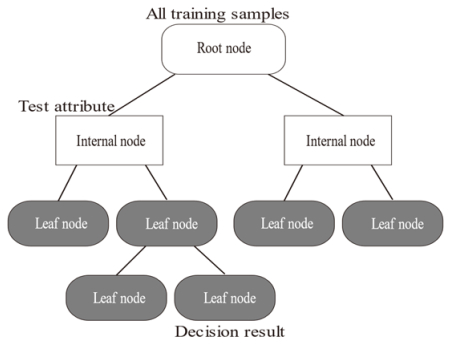| 1.
|
Behzad Ghanbari, Chun-Ku Kuo,
Abundant wave solutions to two novel KP-like equations using an effective integration method,
2021,
96,
0031-8949,
045203,
10.1088/1402-4896/abde5a
|
|
| 2.
|
Jalil Manafian, Onur Alp Ilhan, Sherin Youns Mohyaldeen, Subhiya M. Zeynalli, Gurpreet Singh,
New strategic method for fractional mitigating internet bottleneck with quadratic–cubic nonlinearity,
2021,
2008-1359,
10.1007/s40096-020-00373-2
|
|
| 3.
|
Behzad Ghanbari,
Abundant exact solutions to a generalized nonlinear Schrödinger equation with local fractional derivative,
2021,
0170-4214,
10.1002/mma.7302
|
|
| 4.
|
Nehad Ali Shah, Mustafa Inc,
An Analytical View of Fractional-Order Fisher’s Type Equations within Caputo Operator,
2021,
2021,
1563-5147,
1,
10.1155/2021/5516392
|
|
| 5.
|
M. Akher Chowdhury, M. Mamun Miah, H.M. Shahadat Ali, Yu-Ming Chu, M.S. Osman,
An investigation to the nonlinear (2 + 1)-dimensional soliton equation for discovering explicit and periodic wave solutions,
2021,
23,
22113797,
104013,
10.1016/j.rinp.2021.104013
|
|
| 6.
|
Mostafa M. A. Khater, Behzad Ghanbari,
On the solitary wave solutions and physical characterization of gas diffusion in a homogeneous medium via some efficient techniques,
2021,
136,
2190-5444,
10.1140/epjp/s13360-021-01457-1
|
|
| 7.
|
Kamsing Nonlaopon, Nikita Mann, Sachin Kumar, S. Rezaei, M.A. Abdou,
A variety of closed-form solutions, Painlevé analysis, and solitary wave profiles for modified KdV–Zakharov–Kuznetsov equation in (3+1)-dimensions,
2022,
36,
22113797,
105394,
10.1016/j.rinp.2022.105394
|
|
| 8.
|
Lanre Akinyemi, Mehmet Şenol, Emad Az-Zo’bi, P. Veeresha, Udoh Akpan,
Novel soliton solutions of four sets of generalized (2+1)-dimensional Boussinesq–Kadomtsev–Petviashvili-like equations,
2022,
36,
0217-9849,
10.1142/S0217984921505308
|
|
| 9.
|
N’Gbo N’Gbo, Yonghui Xia,
Traveling Wave Solution of Bad and Good Modified Boussinesq Equations with Conformable Fractional-Order Derivative,
2022,
21,
1575-5460,
10.1007/s12346-021-00541-2
|
|
| 10.
|
Sachin Kumar, Amit Kumar,
Dynamical behaviors and abundant optical soliton solutions of the cold bosonic atoms in a zig-zag optical lattice model using two integral schemes,
2022,
201,
03784754,
254,
10.1016/j.matcom.2022.05.009
|
|
| 11.
|
M. Tantawy, H. I. Abdel-Gawad,
Complex physical phenomena of a generalized (3+1)-dimensional Yu-Toda-Sasa-Fukuyama equation in a two-layer heterogeneous liquid,
2022,
137,
2190-5444,
10.1140/epjp/s13360-022-03199-0
|
|
| 12.
|
Sachin Kumar, Brij Mohan,
A novel and efficient method for obtaining Hirota’s bilinear form for the nonlinear evolution equation in (n+1) dimensions,
2022,
5,
26668181,
100274,
10.1016/j.padiff.2022.100274
|
|
| 13.
|
Yan Cao, Foroud Parvaneh, Sagr Alamri, Ali A. Rajhi, Ali E. Anqi,
Some exact wave solutions to a variety of the Schrödinger equation with two nonlinearity laws and conformable derivative,
2021,
31,
22113797,
104929,
10.1016/j.rinp.2021.104929
|
|
| 14.
|
Sachin Kumar, Brij Mohan, Amit Kumar,
Generalized fifth-order nonlinear evolution equation for the Sawada-Kotera, Lax, and Caudrey-Dodd-Gibbon equations in plasma physics: Painlevé analysis and multi-soliton solutions,
2022,
97,
0031-8949,
035201,
10.1088/1402-4896/ac4f9d
|
|
| 15.
|
Attia Rani, Aniqa Zulfiqar, Jamshad Ahmad, Qazi Mahmod Ul Hassan,
New soliton wave structures of fractional Gilson-Pickering equation using tanh-coth method and their applications,
2021,
29,
22113797,
104724,
10.1016/j.rinp.2021.104724
|
|
| 16.
|
Siyuan Liu, S. Rezaei, S.A. Najati, Mohamed S. Mohamed,
Novel wave solutions to a generalized third-order nonlinear Schrödinger’s equation,
2022,
37,
22113797,
105457,
10.1016/j.rinp.2022.105457
|
|
| 17.
|
Fan Sun,
Propagation of solitons in optical fibers with generalized Kudryashov’s refractive index,
2021,
28,
22113797,
104644,
10.1016/j.rinp.2021.104644
|
|
| 18.
|
Mir Sajjad Hashemi, Hadi Rezazadeh, Hassan Almusawa, Hijaz Ahmad,
A Lie group integrator to solve the hydromagnetic stagnation point flow of a second grade fluid over a stretching sheet,
2021,
6,
2473-6988,
13392,
10.3934/math.2021775
|
|
| 19.
|
Asim Zafar, M. Raheel, M. Asif, Kamyar Hosseini, Mohammad Mirzazadeh, Lanre Akinyemi,
Some novel integration techniques to explore the conformable M-fractional Schrödinger-Hirota equation,
2022,
7,
24680133,
337,
10.1016/j.joes.2021.09.007
|
|
| 20.
|
Arzu Akbulut, S. M. Rayhanul Islam, Hadi Rezazadeh, Filiz Taşcan,
Obtaining exact solutions of nonlinear partial differential equations via two different methods,
2022,
36,
0217-9792,
10.1142/S0217979222500412
|
|
| 21.
|
Nauman Raza, Ziyad A. Alhussain,
Extraction of new bright and Kink soliton solutions related to Ginzburg Landau equation incorporating fractal effects,
2022,
54,
0306-8919,
10.1007/s11082-021-03402-z
|
|
| 22.
|
Guoan Xu, Jibin Li, Yi Zhang,
Exact Solutions and Dynamical Behaviors of the Raman Soliton Model with Anti-Cubic Nonlinearity,
2022,
21,
1575-5460,
10.1007/s12346-022-00642-6
|
|
| 23.
|
Mustafa Inc, Talat Korpinar, Zeliha Korpinar,
Spherical traveling wave hypothesis for geometric optical phase with speherical magnetic ferromagnetic system,
2023,
55,
0306-8919,
10.1007/s11082-022-04374-4
|
|
| 24.
|
Lanre Akinyemi, Mehmet Şenol, Udoh Akpan, Hadi Rezazadeh,
An efficient computational technique for class of generalized Boussinesq shallow-water wave equations,
2022,
24680133,
10.1016/j.joes.2022.04.023
|
|
| 25.
|
Dipankar Kumar, Gour Chandra Paul, Aly R. Seadawy, M.T. Darvishi,
A variety of novel closed‐form soliton solutions to the family of Boussinesq‐like equations with different types,
2022,
7,
24680133,
543,
10.1016/j.joes.2021.10.007
|
|
| 26.
|
Nauman Raza, Amna Batool, Mustafa Inc,
New hyperbolic and rational form solutions of (2+1)-dimensional generalized Korteweg-de Vries model,
2022,
24680133,
10.1016/j.joes.2022.04.021
|
|
| 27.
|
Sayed Allamah Iqbal, Md. Golam Hafez, Yu-Ming Chu, Choonkil Park,
DYNAMICAL ANALYSIS OF NONAUTONOMOUS RLC CIRCUIT WITH THE ABSENCE AND PRESENCE OF ATANGANA-BALEANU FRACTIONAL DERIVATIVE,
2022,
12,
2156-907X,
770,
10.11948/20210324
|
|
| 28.
|
Shoukry El-Ganaini, Sachin Kumar,
Symbolic computation to construct new soliton solutions and dynamical behaviors of various wave structures for two different extended and generalized nonlinear Schrödinger equations using the new improved modified generalized sub-ODE proposed method,
2023,
208,
03784754,
28,
10.1016/j.matcom.2023.01.013
|
|
| 29.
|
Asıf Yokuş, Hatice Taskesen, Mohanad Alaloush, Betül Deniz Demirdaǧ,
On the peakon solutions of some stochastic nonlinear evolution equations,
2021,
53,
0306-8919,
10.1007/s11082-021-03240-z
|
|
| 30.
|
Emad H. M. Zahran, Maha S. M. Shehata, S. M. Mirhosseini-Alizamini, Md Nur Alam, Lanre Akinyemi,
Exact propagation of the isolated waves model described by the three coupled nonlinear Maccari’s system with complex structure,
2021,
35,
0217-9792,
2150193,
10.1142/S0217979221501939
|
|
| 31.
|
S. Kumbinarasaiah, K. R. Raghunatha, Mohammadreza Rezazadeh, Mustafa Inc,
A solution of coupled nonlinear differential equations arising in a rotating micropolar nanofluid flow system by Hermite wavelet technique,
2022,
38,
0177-0667,
3351,
10.1007/s00366-021-01462-z
|
|
| 32.
|
Eric Tala-Tebue, Alper Korkmaz, Hadi Rezazadeh, Nauman Raza,
New auxiliary equation approach to derive solutions of fractional resonant Schrödinger equation,
2021,
11,
1664-2368,
10.1007/s13324-021-00519-y
|
|
| 33.
|
Nur Hasan Mahmud Shahen, Md Habibul Bashar, Tasnim Tahseen, Sakhawat Hossain, Zine El Abiddine Fellah,
Solitary and Rogue Wave Solutions to the Conformable Time Fractional Modified Kawahara Equation in Mathematical Physics,
2021,
2021,
1687-9139,
1,
10.1155/2021/6668092
|
|
| 34.
|
Melike Kaplan, Arzu Akbulut, Barbara Martinucci,
A Mathematical Analysis of a Model Involving an Integrable Equation for Wave Packet Envelope,
2022,
2022,
2314-4785,
1,
10.1155/2022/3486780
|
|
| 35.
|
Shahid Ali, Ahmad Javid,
EXPLICIT SOLUTIONS FOR THE CONFORMABLE REGULARIZED LONG WAVE BURGER'S EQUATION,
2023,
13,
2156-907X,
344,
10.11948/20220135
|
|
| 36.
|
Ziyad A. Alhussain, Nauman Raza, A. M. Nagy,
New Optical Solitons with Variational Principle and Collective Variable Strategy for Cold Bosons in Zig-Zag Optical Lattices,
2022,
2022,
2314-4785,
1,
10.1155/2022/3229701
|
|
| 37.
|
Abdullahi Yusuf, Tukur A. Sulaiman, Mustafa Inc, Sayed Abdel-Khalek, K. H. Mahmoud,
$ M- $truncated optical soliton and their characteristics to a nonlinear equation governing the certain instabilities of modulated wave trains,
2021,
6,
2473-6988,
9207,
10.3934/math.2021535
|
|
| 38.
|
Hira Tariq, Maasoomah Sadaf, Ghazala Akram, Hadi Rezazadeh, Jamel Baili, Yu-Pei Lv, Hijaz Ahmad,
Computational study for the conformable nonlinear Schrödinger equation with cubic–quintic–septic nonlinearities,
2021,
30,
22113797,
104839,
10.1016/j.rinp.2021.104839
|
|
| 39.
|
Lanre Akinyemi, Mehmet Şenol, Udoh Akpan, Kayode Oluwasegun,
The optical soliton solutions of generalized coupled nonlinear Schrödinger-Korteweg-de Vries equations,
2021,
53,
0306-8919,
10.1007/s11082-021-03030-7
|
|
| 40.
|
J.E. Macías-Díaz,
On the nonlinear wave transmission in a nonlinear continuous hyperbolic regime with Caputo-type temporal fractional derivative,
2021,
29,
22113797,
104808,
10.1016/j.rinp.2021.104808
|
|
| 41.
|
Adivi Sri Venkata Ravi Kanth, Kirubanandam Aruna, Kondooru Raghavendar,
Natural transform decomposition method for the numerical treatment of the time fractional
Burgers–Huxley
equation
,
2022,
0749-159X,
10.1002/num.22983
|
|
| 42.
|
Mustafa Inc, Talat Körpınar, Zeliha Körpınar, Dumitru Baleanu, Rıdvan Cem Demirkol,
New approach for propagated light with optical solitons by optical fiber in pseudohyperbolic space ℍ02,
2021,
0170-4214,
10.1002/mma.7738
|
|
| 43.
|
Yan Cao, Hayder A. Dhahad, Hasanen M. Hussen, Sagr Alamri, Ali A. Rajhi, Ali E. Anqi, Kottakkaran Sooppy Nisar, Roshan Noor Mohamed,
Classes of new analytical soliton solutions to some nonlinear evolution equations,
2021,
31,
22113797,
104947,
10.1016/j.rinp.2021.104947
|
|
| 44.
|
Behzad Ghanbari,
Employing Hirota’s bilinear form to find novel lump waves solutions to an important nonlinear model in fluid mechanics,
2021,
29,
22113797,
104689,
10.1016/j.rinp.2021.104689
|
|
| 45.
|
F. Samsami Khodadad, S. M. Mirhosseini-Alizamini, B. Günay, Lanre Akinyemi, Hadi Rezazadeh, Mustafa Inc,
Abundant optical solitons to the Sasa-Satsuma higher-order nonlinear Schrödinger equation,
2021,
53,
0306-8919,
10.1007/s11082-021-03338-4
|
|
| 46.
|
Syed Tahir Raza Rizvi, Kashif Ali, Ahmet Bekir, Badar Nawaz, M. Younis,
Investigation on the Single and Multiple Dromions for Nonlinear Telegraph Equation in Electrical Transmission Line,
2022,
21,
1575-5460,
10.1007/s12346-021-00547-w
|
|
| 47.
|
Abdulla - Al - Mamun, Samsun Nahar Ananna, Tianqing An, Md. Asaduzzaman, Md. Munnu Miah,
Solitary wave structures of a family of 3D fractional WBBM equation via the tanh–coth approach,
2022,
5,
26668181,
100237,
10.1016/j.padiff.2021.100237
|
|
| 48.
|
Arzu Akbulut, Mir Sajjad Hashemi, Hadi Rezazadeh,
New conservation laws and exact solutions of coupled Burgers' equation,
2021,
1745-5030,
1,
10.1080/17455030.2021.1979691
|
|
| 49.
|
Fei Long, Shami A.M. Alsallami, S. Rezaei, Kamsing Nonlaopon, E.M. Khalil,
New interaction solutions to the (2+1)-dimensional Hirota–Satsuma–Ito equation,
2022,
37,
22113797,
105475,
10.1016/j.rinp.2022.105475
|
|
| 50.
|
Mostafa M. A. Khater, Adil Jhangeer, Hadi Rezazadeh, Lanre Akinyemi, M. Ali Akbar, Mustafa Inc, Hijaz Ahmad,
New kinds of analytical solitary wave solutions for ionic currents on microtubules equation via two different techniques,
2021,
53,
0306-8919,
10.1007/s11082-021-03267-2
|
|
| 51.
|
Sachin Kumar, Monika Niwas,
New optical soliton solutions and a variety of dynamical wave profiles to the perturbed Chen–Lee–Liu equation in optical fibers,
2023,
55,
0306-8919,
10.1007/s11082-023-04647-6
|
|
| 52.
|
Manju Kashyap, S. Pratap Singh, Surbhi Gupta, Purnima Lala Mehta,
Novel Solution for Time-fractional Klein-Gordon Equation with Different Applications,
2023,
8,
2455-7749,
537,
10.33889/IJMEMS.2023.8.3.030
|
|
| 53.
|
Y. Long Qiang, Neil G.R. Broderick, C. Martijn de Sterke,
Analytic method for finding stationary solutions to generalized nonlinear Schrödinger equations,
2024,
462,
01672789,
134148,
10.1016/j.physd.2024.134148
|
|
| 54.
|
Kayode Oluwasegun, Samuel Ajibola, Udoh Akpan, Lanre Akinyemi, Mehmet Şenol,
Investigation of oceanic wave solutions to a modified (2+1)-dimensional coupled nonlinear Schrödinger system,
2024,
0217-9849,
10.1142/S0217984925500368
|
|
| 55.
|
Xiaodong Yang, Yuchen Yang, Zhen Luo, Yuanbo Bi,
A Survey of Schematic of Vacuum Quantum Structure: General Equation for EBSF (III),
2023,
07,
2424-9424,
10.1142/S2424942423500093
|
|
| 56.
|
Renfei Luo, Khalida Faisal, Hadi Rezazadeh, Hijaz Ahmad,
Soliton solutions of optical pulse envelope $$E(Z,\tau)$$ with $$\nu$$-time derivative,
2024,
56,
1572-817X,
10.1007/s11082-023-06146-0
|
|
| 57.
|
K. R. Raghunatha, S. Kumbinarasaiah, Mustafa Inc, Ali Akgül,
A Study of Nanofluid Flow with Free Bio-Convection in 3D Nearby Stagnation Point by Hermite Wavelet Technique,
2024,
13,
2169-432X,
231,
10.1166/jon.2024.2146
|
|
| 58.
|
Zhoujin Cui, Tao Lu, Bo Chen, Ammar Alsinai,
Traveling Wave Solutions of the Conformable Fractional Klein–Gordon Equation With Power Law Nonlinearity,
2024,
2024,
2314-4629,
10.1155/2024/8367957
|
|
| 59.
|
Kennedy C. Onyelowe, Farid Fazel Mojtahedi, Ali Golaghaei Darzi, Denise-Penelope N. Kontoni,
Solving large deformation problems in geotechnical and geo-environmental engineering with the smoothed particle hydrodynamics: a state-of-the-art review of constitutive solutions,
2023,
82,
1866-6280,
10.1007/s12665-023-11079-8
|
|
| 60.
|
K. R. Raghunatha, Y. Vinod,
Effects of heat transfer on MHD suction–injection model of viscous fluid flow through differential transformation and Bernoulli wavelet techniques,
2023,
52,
2688-4534,
4914,
10.1002/htj.22911
|
|
| 61.
|
Alphonse Houwe, Souleymanou Abbagari, Lanre Akinyemi, Youssoufa Saliou, Mibaile Justin, Serge Yamigno Doka,
Modulation instability, bifurcation analysis and solitonic waves in nonlinear optical media with odd-order dispersion,
2023,
488,
03759601,
129134,
10.1016/j.physleta.2023.129134
|
|
| 62.
|
Emmanuel Yomba, Poonam Ramchandra Nair,
New Coupled Optical Solitons to Birefringent Fibers for Complex Ginzburg–Landau Equations with Hamiltonian Perturbations and Kerr Law Nonlinearity,
2024,
12,
2227-7390,
3073,
10.3390/math12193073
|
|
| 63.
|
Emmanuel Yomba,
Modulational instability and chirped modulated wave, chirped optical solitons for a generalized (3+1)-dimensional cubic-quintic medium with self-frequency shift and self-steepening nonlinear terms,
2024,
311,
00304026,
171939,
10.1016/j.ijleo.2024.171939
|
|
| 64.
|
Lanre Akinyemi, Francis Erebholo, Valerio Palamara, Kayode Oluwasegun,
A Study of Nonlinear Riccati Equation and Its Applications to Multi-dimensional Nonlinear Evolution Equations,
2024,
23,
1575-5460,
10.1007/s12346-024-01137-2
|
|
| 65.
|
Abdul S. Awan, Sultan Hussain,
Differential–anti-differential equations and their solutions,
2023,
1016-2526,
313,
10.52280/pujm.2023.55(7-8)04
|
|
| 66.
|
Md. Mamunur Roshid, Mahtab Uddin, Mohamed Abdalla, Md. Ahsan Ullah,
Bifurcation analysis, phase portrait, and exploring exact traveling wave propagation of M-fractional (3 + 1) dimensional nonlinear equation in the fluid medium,
2025,
57,
1572-817X,
10.1007/s11082-025-08093-4
|
|










 DownLoad:
DownLoad:











